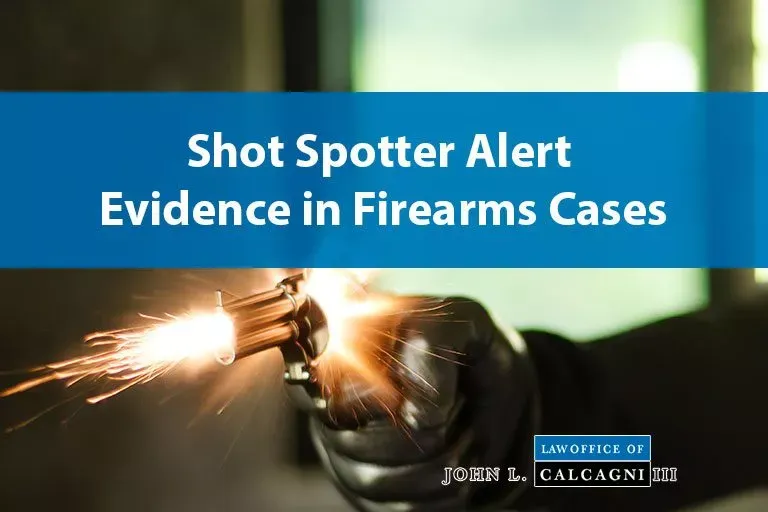
The Growing Use of Shot Spotter Technology in Criminal Prosecution
Table of Contents
Shot Spotter evidence is growing in popularity across the United States in the criminal prosecution of firearm offenses.
What is Shot Spotter? Understanding the Gunfire Alert System
Shot Spotter is an alert system created to automatically notify law enforcement about gunfire. Through its advanced technology, a Shot Spotter alert system relies upon acoustic sensors placed strategically around a designated area to notify, such as a high crime area, to detect gunshots.
How Shot Spotter Works
When a gun is fired is some proximity to a Shot Spotter acoustic sensor, a notification is automatically sent to local police regarding the existence of the shot and the area where the shot occurred. This alert typically prompts a physical response by police to the particular area where the shot was detected. Not every American city is equipped with a Shot Spotter system.
Impact on Law Enforcement: How Shot Spotter Affects Police Response and Conduct
However, where installed, this advanced technology has affected the way police officers conduct their jobs, including whether an officer has reasonable suspicion of a crime.
The Legal Standard: Reasonable Suspicion and Its Role in Detention and Investigation
For an officer to have reasonable suspicion necessary to conduct a detention, he must point to objective and reasonable facts to believe criminal activity is afoot, meaning suspicion that an individual has committed, is committing, or is about to commit a crime. This suspicion must be based on specific facts and reasonable inferences which taken together warrant a detention.
Terry v. Ohio: The Landmark Supreme Court Decision on Reasonable Suspicion
This reasonable suspicion standard was enunciated by the United States Supreme Court in its landmark decision, Terry v. Ohio, 392 U.S. 1 (1968). For police to rely upon third-party information to establish reasonable suspicion, the third-party source must have some indicia of being reliable.
Assessing Reliability: Shot Spotter Alerts as Third-Party Information
Shot Spotter alerts qualify as third-party information, for which reliability is required. In a Massachusetts case, Commonwealth v. Ford, 100 Mass. App. Ct. 712 (2022), an appeals court held that it was reasonable for a police officer to stop the defendant. The Ford court reasoned that reasonable suspicion was formed by the combination of a Shot Spotter alert and the officer hearing what he recognized to be shots fired.
Shot Spotter technology alone is not enough to establish reasonable suspicion, but when viewed together with other specific facts and information, such may constitute reasonable suspicion for an officer to stop or detain an individual.
Police Response to Shot Spotter Alerts: Investigation and Evidence Gathering
Police may rely upon Shot Spotter alerts alone to respond to an area where a gunshot was detected. This may lead to additional investigation enabling police to develop additional information to identify a more precise location of the shooting, the number of shots fired, resulting injured parties or victims, resulting property damage, and the identification of possible suspects.
Additional Information: Using Shot Spotter as an Investigative Tool
This additional information may then be relied upon to establish reasonable suspicion. Even where reasonable suspicion cannot be established, the Shot Spotter technology may still be employed and used as helpful investigative tool.
Seeking Legal Help for Cases Involving Shot Spotter Alert Evidence
If you have questions or concerns about Shot Spotter alerts or have been arrested and charged with a gun or firearms-related crime where Shot Spotter alert evidence was relied upon by police, contact the Massachusetts Gun Defense Lawyer John L. Calcagni III, Inc. for a free consultation at (401) 351-5100

